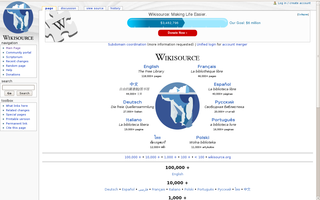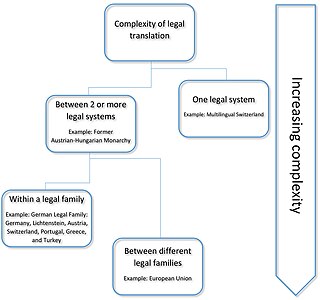Related Research Articles

Braille is a tactile writing system used by people who are visually impaired. It can be read either on embossed paper or by using refreshable braille displays that connect to computers and smartphone devices. Braille can be written using a slate and stylus, a braille writer, an electronic braille notetaker or with the use of a computer connected to a braille embosser.

The euro is the official currency of 20 of the 27 member states of the European Union. This group of states is officially known as the euro area or, more commonly, the eurozone. The euro is divided into 100 euro cents.

ISO 4217 is a standard published by the International Organization for Standardization (ISO) that defines alpha codes and numeric codes for the representation of currencies and provides information about the relationships between individual currencies and their minor units. This data is published in three tables:

Machine translation is use of computational techniques to translate text or speech from one language to another, including the contextual, idiomatic and pragmatic nuances of both languages.
Natural language processing (NLP) is an interdisciplinary subfield of computer science and artificial intelligence. It is primarily concerned with providing computers with the ability to process data encoded in natural language and is thus closely related to information retrieval, knowledge representation and computational linguistics, a subfield of linguistics. Typically data is collected in text corpora, using either rule-based, statistical or neural-based approaches in machine learning and deep learning.

In computing, internationalization and localization (American) or internationalisation and localisation (British), often abbreviated i18n and l10n respectively, are means of adapting computer software to different languages, regional peculiarities and technical requirements of a target locale.

Mojibake is the garbled or gibberish text that is the result of text being decoded using an unintended character encoding. The result is a systematic replacement of symbols with completely unrelated ones, often from a different writing system.

Wikisource is an online digital library of free-content textual sources on a wiki, operated by the Wikimedia Foundation. Wikisource is the name of the project as a whole and the name for each instance of that project ; multiple Wikisources make up the overall project of Wikisource. The project's aim is to host all forms of free text, in many languages, and translations. Originally conceived as an archive to store useful or important historical texts, it has expanded to become a general-content library. The project officially began on November 24, 2003, under the name Project Sourceberg, a play on Project Gutenberg. The name Wikisource was adopted later that year and it received its own domain name.
Computer-aided translation (CAT), also referred to as computer-assisted translation or computer-aided human translation (CAHT), is the use of software, also known as a translator, to assist a human translator in the translation process. The translation is created by a human, and certain aspects of the process are facilitated by software; this is in contrast with machine translation (MT), in which the translation is created by a computer, optionally with some human intervention.

Legal translation is the translation of language used in legal settings and for legal purposes. Legal translation may also imply that it is a specific type of translation only used in law, which is not always the case. As law is a culture-dependent subject field, legal translation is not necessarily linguistically transparent. Intransparency in translation can be avoided somewhat by use of Latin legal terminology, where possible, but in non-western languages debates are centered on the origins and precedents of specific terms, such as in the use of particular Chinese characters in Japanese legal discussions.
Several linguistic issues have arisen in relation to the spelling of the words euro and cent in the many languages of the member states of the European Union, as well as in relation to grammar and the formation of plurals.
The euro sign is the currency sign used for the euro, the official currency of the eurozone and adopted, although not required to, by Kosovo and Montenegro. The design was presented to the public by the European Commission on 12 December 1996. It consists of a stylized letter E, crossed by two lines instead of one. Depending on convention in each nation, the symbol can either precede or follow the value, e.g., €10 or 10 €, often with an intervening space.

Google Translate is a multilingual neural machine translation service developed by Google to translate text, documents and websites from one language into another. It offers a website interface, a mobile app for Android and iOS, as well as an API that helps developers build browser extensions and software applications. As of August 2024, Google Translate supports 243 languages at various levels. It claimed over 500 million total users as of April 2016, with more than 100 billion words translated daily, after the company stated in May 2013 that it served over 200 million people daily.
Foreign exchange risk is a financial risk that exists when a financial transaction is denominated in a currency other than the domestic currency of the company. The exchange risk arises when there is a risk of an unfavourable change in exchange rate between the domestic currency and the denominated currency before the date when the transaction is completed.

Subtitles are texts representing the contents of the audio in a film, television show, opera or other audiovisual media. Subtitles might provide a transcription or translation of spoken dialogue. Although naming conventions can vary, captions are subtitles that include written descriptions of other elements of the audio, like music or sound effects. Captions are thus especially helpful to people who are deaf or hard-of-hearing. Subtitles may also add information that is not present in the audio. Localizing subtitles provide cultural context to viewers. For example, a subtitle could be used to explain to an audience unfamiliar with sake that it is a type of Japanese wine. Lastly, subtitles are sometimes used for humor, as in Annie Hall, where subtitles show the characters' inner thoughts, which contradict what they were saying in the audio.

Translation is the communication of the meaning of a source-language text by means of an equivalent target-language text. The English language draws a terminological distinction between translating and interpreting ; under this distinction, translation can begin only after the appearance of writing within a language community.
Technical translation is a type of specialized translation involving the translation of documents produced by technical writers, or more specifically, texts which relate to technological subject areas or texts which deal with the practical application of scientific and technological information. While the presence of specialized terminology is a feature of technical texts, specialized terminology alone is not sufficient for classifying a text as "technical" since numerous disciplines and subjects which are not "technical" possess what can be regarded as specialized terminology. Technical translation covers the translation of many kinds of specialized texts and requires a high level of subject knowledge and mastery of the relevant terminology and writing conventions.
Website localization is the process of adapting an existing website to local language and culture in the target market. It is the process of adapting a website into a different linguistic and cultural context— involving much more than the simple translation of text. This modification process must reflect specific language and cultural preferences in the content, images and overall design and requirements of the site – all while maintaining the integrity of the website. Culturally adapted web sites reduce the amount of required cognitive efforts from visitors of the site to process and access information, making navigation easier and attitudes toward the web site more favorable. The modification of the website must additionally take into consideration the stated purpose of the new website with a focus on the targeted audience/market in the new locale. Website localization aims to customize a website so that it seems "natural", to its viewers despite cultural differences between the creators and the audience. Two factors are involved—programming expertise and linguistic/cultural knowledge.
Multimedia translation, also sometimes referred to as Audiovisual translation, is a specialized branch of translation which deals with the transfer of multimodal and multimedial texts into another language and/or culture. and which implies the use of a multimedia electronic system in the translation or in the transmission process.
References
- ↑ Bellandi, Francesco (2012-05-21). Dual Reporting for Equity and Other Comprehensive Income under IFRSs and U.S. GAAP. John Wiley & Sons. pp. 315–316. ISBN 978-1-119-95096-7.